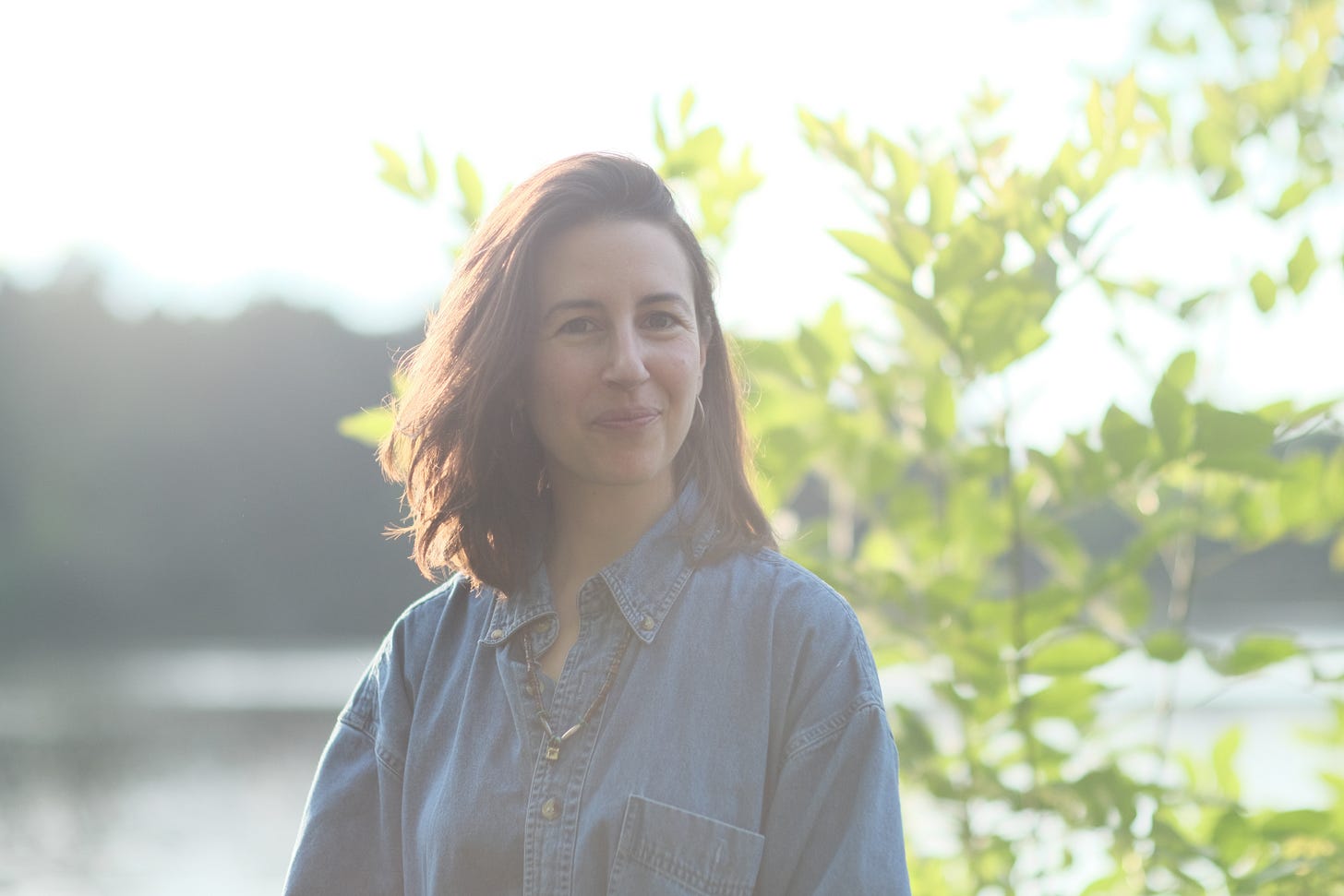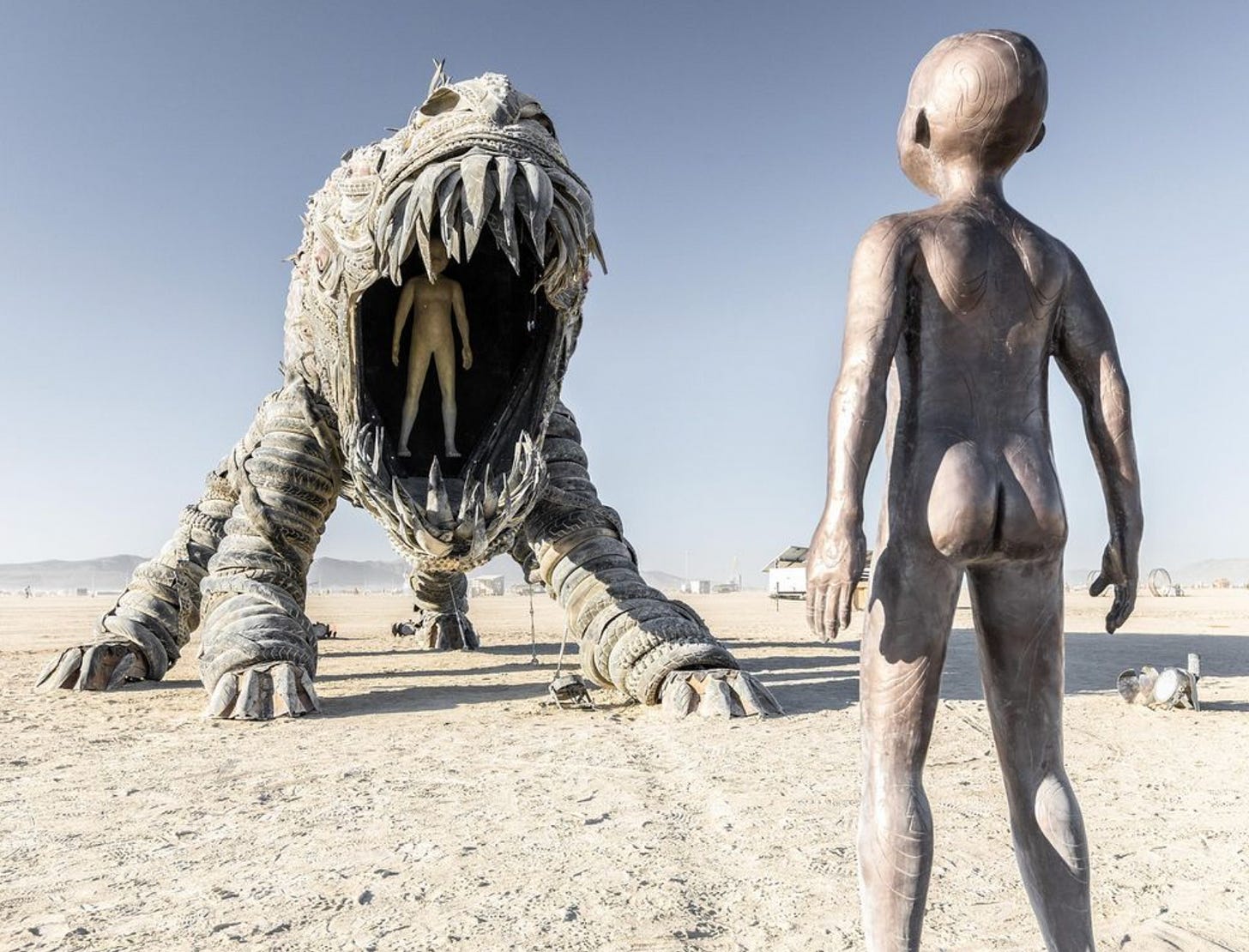How To Cope, Part II: Body Wisdom From A Climate-Focused Therapist
"A really key piece here is how we are developing our capacity for joy, for feeling good, for pleasure."
Thanks so much to everyone who responded so positively to last week’s piece! Your support really means a lot to me. This newsletter is an ongoing experiment; I love hearing what I’m getting right and suggestions for how it could be better. And please, please, tell others who you think might be interested in subscribing too!
A quick note: my most recent book, The Stolen Year is on sale for $3.99 for August only!
I’m continuing my series on what I currently understand about how to cope with climate emotions; part one is here.
This week is a conversation I’ve been waiting about four years to have , and it’s never been more timely. I emailed myself Janna Diamond’s name as a memo back in 2019 as I was reporting my first stories that touched on climate change x mental health x parenting. I knew only that she was a therapist who worked with the body and focused on climate emotions. (Here’s her Instagram: @evolve.and.practice.)
I think that July 2023 on this planet was probably a peak moment for ecological distress.
After my most recent newsletter, a mutual friend offered to connect us and we had this conversation. I found it so affirming, so grounding and sweet. And there’s a part II for paid subscribers only.
ANYA: So in this newsletter I'm hoping to help parents who hadn't seen themselves as part of the climate movement, but are starting to feel more and more implicated, to feel like they do know something and they do have something to bring to the table and that their experiences are valid. And they also can be empowered to be active and see themselves as part of a movement.
So what’s your background? And how did you get started in this kind of work?
JANNA: I was a dancer growing up in LA, and I was a professional dancer in New York. I had always felt connected to the Earth, feeling the Earth's pain, and that drew me into the world of climate activism where I followed pathways to Joanna Macy's work so many years ago.
ANYA: I love her work so much.
JANNA: It was so under the radar then!
And one day I was like, oh. It’s very clear. I'm here to hold people through navigating this time.
ANYA: How do you describe what you do?
JANNA: So much of my work is about, how do we come home to our animal bodies. Which, ultimately, are not separate from the Earth.
It's like, confronting this myth of separation or that we are apart from this ecological web that we are embedded in.
So much of my work is about, how do we come home to our animal bodies.
Which, ultimately, are not separate from the Earth.
[For example], learning how to ground. To be in our legs, to feel a connection with the earth. How does that affect how we move in the world when we slow down? A lot of these things are really radical in dominant culture.
But the last couple years have seen the language of climate anxiety, ecological distress, and also somatics, really, expand.
ANYA: Yeah.
JANNA: More people were interested : How are we being human right now? In this really complex and uncertain time? Like, how do we even move and be together and be with ourselves. These are such big questions that we've really been, by and large, culturally numb to and separated from.
ANYA: Can you give me some background on body psychotherapy? If people's mental model of therapy is you're sitting in a chair or you're on Zoom and you're just talking, like, how is this different? What does it feel like?
JANNA: I bridge a few different modalities. Somatic experiencing and core energetics are my two primary modalities.
And these are actually these really complementary fields that work with big energy and also work with really subtle [energy].
Somatic therapy is, we're not leaving the whole body out. We are working with our whole selves. We can work with sensations, emotions, movements, breath, imagery, energy…It's where we're listening to what is actually arising in the present moment.
ANYA: Can you get more concrete for me? Like, what does your office look like?
JANNA: It looks like a therapy office! There's a little bit more space to move around. There's no restrictions like staying on the couch or even sitting. Sometimes we'll use props. We sometimes use the wall. We can use pillows of all shapes and sizes: to hold, to squeeze, to protect ourselves, to push against.
What we're doing is accessing more primal, more animalistic impulses, places that we've had to hide, to restrict, to repress, to begin to unwind those patterns, so that we have more access to ourselves, more access to our responsiveness, more access to freedom of expression. And all of this, right, is a part of being able to be present with our emotions.
I love leading workshops where we might build up to like a primal scream. It really unlocks some major pieces of how we've been taught how to hold ourselves.
ANYA: It's interesting to me because a lot of these techniques, like acting out emotions with pillows, they're more mainstream when it comes to little kids, you know?
JANNA: Yes. They're more accepted. Totally. Which is, you know, both great and heartbreaking.
ANYA: And how might this all connect to climate emotions specifically?
JANNA: Well, here we had a tornado recently. I felt so much fear during and in the aftermath of that.
And so we might begin to open that up and explore that. It's not just to talk about the fear, but we may say, okay, so when you recall feeling that fear. What are you noticing in your body right now?
And then there's also ways to, like, complete nervous system cycles.
ANYA: Completing the cycle? That makes me think of how animals shake something off after they've been through something? Is that right? [Here’s a really interesting book on this idea of completing stress cycles.]

JANNA : It can be really empowering to have someone imagine being able to flee the scene. Or to fight back. To be able to stand up to something that feels hurtful or overwhelming. The pacing has to be really intentional. But we're working with these emotions, we're not working against.
And it's not just about diving into what's hard. I mean, that's a really key piece here, is like how we are developing our capacity for joy, for feeling good, for pleasure. How do we expand the range on both sides for feeling more?
ANYA: Yes! Say more about that.
JANNA: How do we have more of ourselves, right? When we're not holding back, when we're not trying to protect the places that might want to say no, want to hide.
Those are all protective and really wise responses. So we don't want to negate those or make those wrong because they're not at all.
But as we practice– right, everything is practicing–as we practice working with those survival responses, we allow the body to have a little bit more space to expand that window of resilience.
To feel a little bit more, to know that if they feel this thing that they don't want to feel, they're not going to be taken out by it, which is like a really common fear, right?
‘I can't feel that grief. It's going to swallow me whole.’ Okay, so what if we just feel this much? Like, what if we start there? Right. And let's see. Let's see what happens. Let's see how that goes.
And one consequence of this kind of work can be, you know, it's not just about feeling the crappy feelings more, but when you expand your emotional range, you can also feel more joy and more ease. Or pleasure.
And one consequence of this kind of work can be, you know, it's not just about feeling the crappy feelings more, but when you expand your emotional range, you can also feel more joy and more ease. Or pleasure.
ANYA: Let's say someone comes to you. And they say, you know, this wildfire smoke. My children couldn't play outside and it's just giving me nightmares and I feel so hopeless. Where do you start with that?
JANNA: Yeah. Well, first you begin to slow down. We could do an hour just on that one sentence. Right?
ANYA: Right.
JANNA: And it may actually open a lot of other pieces around. What it elicits for you, what images you see, how it might connect to your fears of the future. Also, like. Your longing and your love for your children and your desire to protect them.
ANYA: It's a really interesting shift, and it's one that I am familiar with from Joanna Macy’s work, to say, ’ I fear so much for my children,’ and then you're like, ‘Well, let's think about how much you care for your children and what you want for your children and your desire to protect your children.’
And these are very different emotions. Instead of like this, filmstrip of horrors that unreels when you're like, what's going to happen to them? It's more about, what do you feel about your children? What do you want for your children?
JANNA: Yes. And. we don't want to bypass the hard pieces.
ANYA: Sure. Right.
JANNA: We want to have access to and build capacity for feeling the fear. And yet, without being, you know, really tapping into that, that love and longing, it's hard to be able to go there. There's not as much foundation to work from.
ANYA: So if someone was brand new to this and they're, you know, they are feeling—I think that July 2023 on this planet was probably a peak moment for ecological distress. So if someone's brand new to this idea, what would be the one thing that you'd want them to know first?
JANNA: You're in such good company.
Whatever you're feeling or noticing is like a sign of your aliveness and your receptivity with all life. It's the thing that brings us together.
Some links
Don’t read this right before bed, but do read it: on the desperate quest to save Florida’s coral from the boiling sea. Paired very well with this brilliant, bleak satirical novel about extinction markets. And this 46,000-year-old Lazarus roundworm.
I wrote about teachers learning how to teach climate change for the Hechinger Report. I enjoyed my Instagram Live chat with the inspiring Gen Z climate leader McKenna Dunbar.









